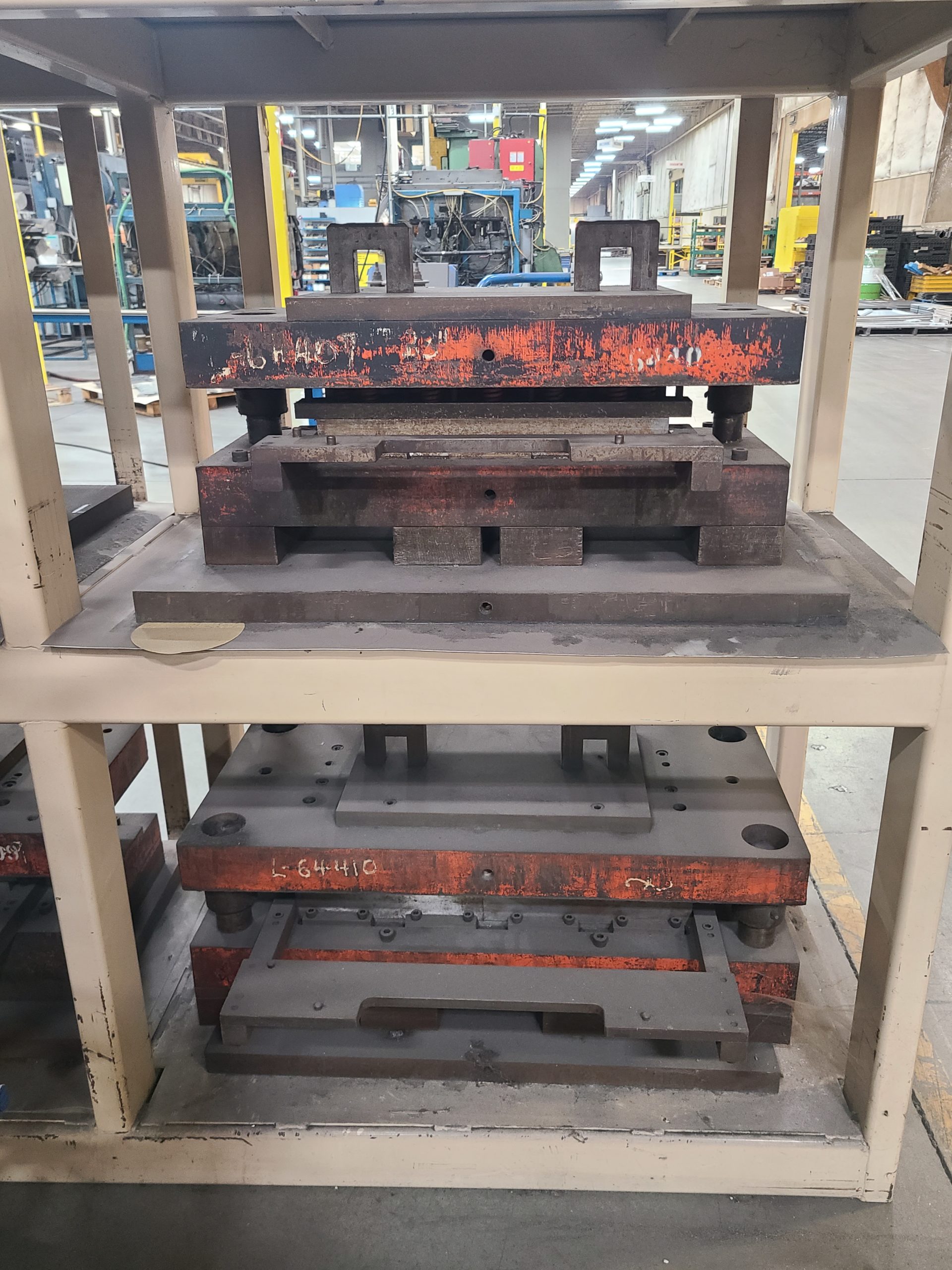The roll forming industry has used rotary punching for many decades. Technically, rotary punching is considered a secondary operation in the roll forming process, but it can be incorporated in-line easily enough to eliminate unnecessary material handling costs in large quantity jobs.
Rotary Punches add holes, squares, oblongs or rectangles to roll-formed materials. The equipment’s rotary shear rolls can also pre-cut regular lines. A rotary lance or an open slot-style unit can rotary punch other items such as building soffits and panels.
How Rotary Punching In Roll Forming Works
Rotary punching incorporates two rolls — an upper roll, featuring the male portion of the design to be punched and a bottom roll that features the female portion of the design. As the material rolls between the two rotary rollers, the top roll meets the bottom mating roll and punches, or lances the material. The diameter of the rolls dictates the required line speed as well as the length of the punched pattern.
Two Styles Of Rotary Punching Units
There are two different styles of rotary punching units—cam-in and fixed. With cam-in rotary punches, a mechanical or “solid cam” controls the punches. This unit features a descending punch that moves up and down, similar to a stamping machine.
Fixed units feature punches that do not move inside the roll forming machine. The fixed units punches continuously along the length of the whole material.
Both styles of punches are manufactured from pre-hardened steel and feature similar construction. The type of material used in each application is dependent upon the speed at which the unit runs, the gauge of the material and the required durability of the final piece.
Common Rotary Punch Units In Roll Forming Applications
Modern roll forming rotary punching units are operated by one of four different means. These methods include:
A rotary unit with its own drive system
This type of rotary punching application can operate at a faster speed than the line is operating. It creates a free loop between itself and the roll former.
A rotary unit without a drive system
This type of application requires the operator to manually feed the material into the rotary puncher by using a hand crank and then the operator hand-feeds the material into the roll forming machine. As the roll former pulls the stock through, the rotary punch rotates and makes the required punches without the need of an independent drive.
A rotary unit with a combination drive/no-drive system
This system features an overriding clutch used to start up the unit without accidentally snapping the material. Once the roll forming machine picks up speed, the overriding clutch then provides the power instead of the rotary motor.
A rotary unit with a computer-controlled servo system
This rotary unit uses an amplifier-drive system that controls the top and bottom rolls through a series of motion control software programs and a rotary encoder. This system is entirely programmable.
Advantages Of Applications In Roll Forming
Rotary punches provide a number of valuable advantages to a roll forming application. For instance, the units require very little floor space because they are normally compact pieces of machinery. This is because they do not require an independent feed system or punching press. The typical roll forming rotary punch is sized around 3’ x 3’ in dimension. Some rotary punches can even be mounted on the inside of the existing roll forming equipment, thus taking up no space at all.
In addition to minimal space requirements, the rotary punches are also relatively quiet. Since the material rolling through the rotary punch is being sheared progressively, there is little noise and minimal vibration associated with rotary punching applications.
Rotary punches are also quite durable and can usually punch material accurately for a lengthy time before routine maintenance like sharpening is required. This results from the wear being spread over the diameter of the roll. If during production burrs do appear, it generally means that the rotor is not aligned correctly.
Read more: Rotary Punching Applications In Roll Forming






